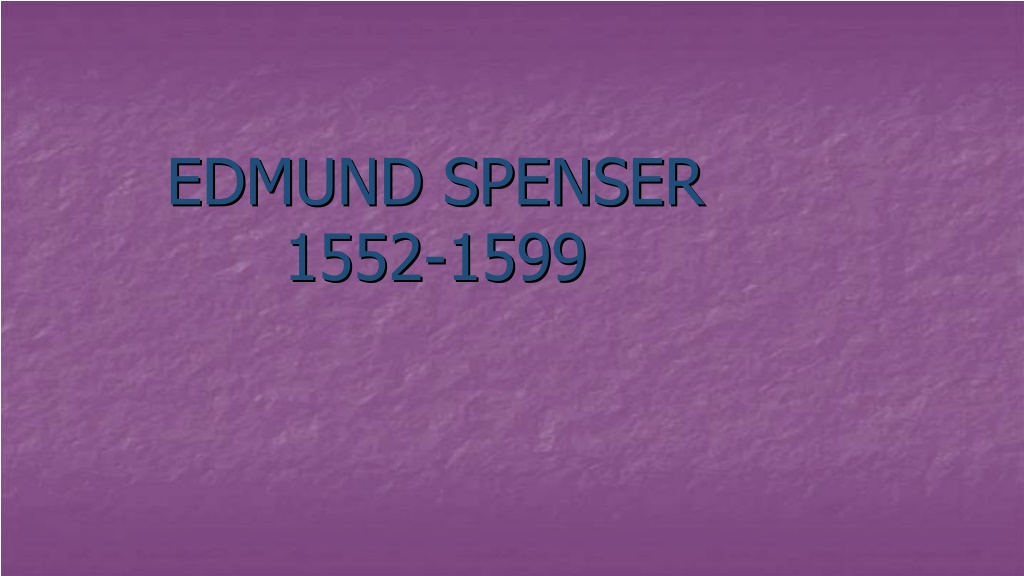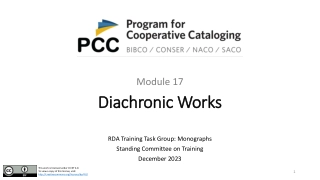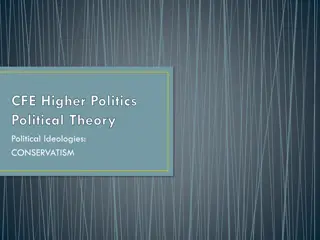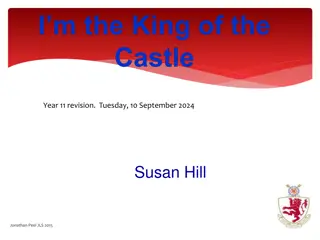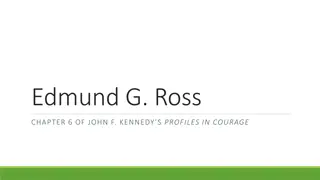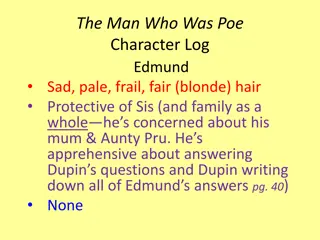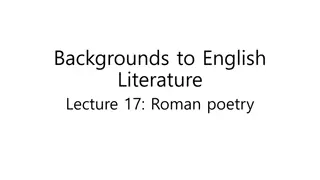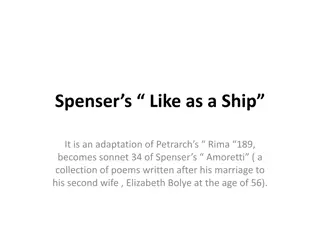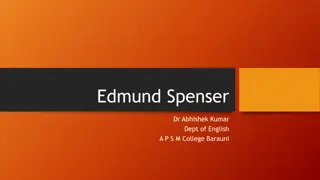The Life and Works of Edmund Spenser (1552-1599)
Edmund Spenser, born in London around 1552, was a prominent English poet known for works such as "The Faerie Queene" and "The Shepheardes Calender." His contributions to English literature reflected religious, humanistic, and nationalistic ideals. Despite facing personal challenges, Spenser's poetic style and themes epitomized the English Renaissance. Explore his life, works, and enduring legacy.
Download Presentation

Please find below an Image/Link to download the presentation.
The content on the website is provided AS IS for your information and personal use only. It may not be sold, licensed, or shared on other websites without obtaining consent from the author.If you encounter any issues during the download, it is possible that the publisher has removed the file from their server.
You are allowed to download the files provided on this website for personal or commercial use, subject to the condition that they are used lawfully. All files are the property of their respective owners.
The content on the website is provided AS IS for your information and personal use only. It may not be sold, licensed, or shared on other websites without obtaining consent from the author.
E N D
Presentation Transcript
EDMUND SPENSER 1552-1599
1. LIFE 1. Born in London in or about 1552, was the son of a poor tailor. 2. He studied a humanist curriculum that included the study of English language and literature. 3. spent time in the service of the highly influential Earl of Leicester (Robert Dudley, Puritan Head).
4. in 1580 he was named secretary to Lord Grey, the new Lord Deputy of Ireland. 5. courting and marrying Elizabeth Boyle, an Anglo-Irish woman in 1594. 6. named sheriff of Cork, revolution broke out, his home burned, fled to England, death in 1599.
Works and Contribution 1. His work reflects the religious, humanistic, and nationalistic ideals of contributions to English literature are in the form of an enlarged poetic vocabulary, a flexible verse style, and a rich fusing of the philosophic and literary currents of the English Renaissance. Elizabethan England. His 2. Spenserian stanza.
3. The Shepheardes Calender, political and religious problems. 4. The Faerie Queene, combined elements of a chivalric romance, a handbook of manners and morals, and an epic poem about the history and character of a nation, also an allegory.
5. Complaints: Sundry Small Poems of the World's Vanity. 6. Amoretti . 7. Epithalamion .
Like as a Ship Amoretti, xxxiv LIKE as a ship, that through the ocean wide, By conduct of some star, doth make her way; When as a storm hath dim d her trusty guide Out of her course doth wander far astray!
So I, whose star, that wont with her bright ray Me to direct, with clouds is over-cast, Do wander now, in darkness and dismay, Through hidden perils round about me placed;
Yet hope I well that, when this storm is past, My Helice, the loadstar of my life, Will shine again, and look on me at last, With lovely light to clear my cloudy grief,
Till then I wander careful, comfortless, In secret sorrow, and sad pensiveness.
ANALYSIS TIPS 1. The poem chronicles his courtship with his wife Elizabeth Boyle. 2. Petrarch wrote his sonnets about women that he would never be able to obtain, while Spenser wrote about a single woman whom he did marry. 3. Ursa Major (Great Bear), and Greek mythology.
4. concatenation at lines 4-5 and 8-9. A/ the quatrains can be linked by subject matter. B/ add emotional tension and psychological revelation. 5. Turning point (9). 6. The rhyme scheme is ababbcbccdcdee.
Figures of Speech 1. simile. 2. personification. 3. Alliteration.
